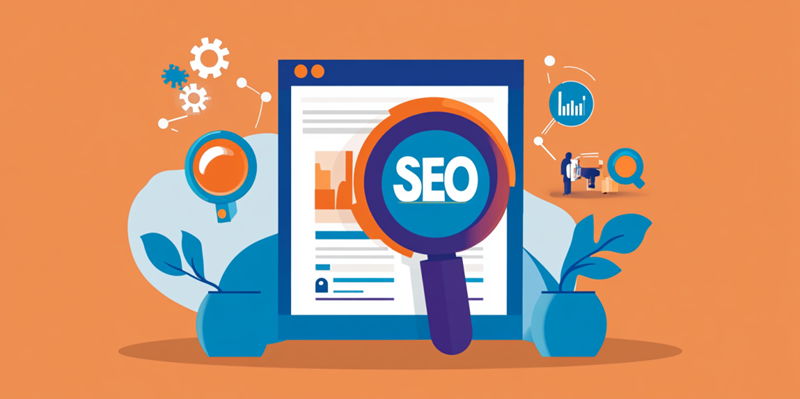Creating landing pages that rank higher, attract clicks, and convert visitors into customers is essential for any online business. Avoiding common pitfalls and following best practices will help you achieve these goals.
Landing Page Optimization Matters for SEO
Your customers may browse your website, but key pages drive conversions. Conversion pages, commonly known as landing pages, are crucial. These pages must compel visitors to do business with you. If these pages are not finely tuned, you risk losing potential customers who may never return.
In an era where social networks hesitate to refer traffic, and AI continues its relentless march, you must convince visitors to take action when they do land on your website. Below is a simple process for building a high-performance landing page that ranks highly, drives engagement, and leads to conversions.
SEO Leaks and Leaky Landing Pages
Earlier this year, the first major Google search algorithm leak provided insights into how the dominant search engine ranks results. User engagement metrics like clicks, time spent on a page, and click-through rates (CTR) influence rankings. More recently, SEO expert Cindy Krum theorized that user engagement might be even more critical for SEO.
Google has a treasure trove of engagement data through popular platforms like Google Chrome and Android. It would be surprising if they weren’t using it to understand high-engagement pages. This means that good SEO and good marketing are intertwined. You need to create pages that speak to your audience’s needs and desires.
Common Landing Page Problems
Before outlining what to do, let’s examine common problems you should avoid. A complex page, too much text, unclear calls to action, and images that don’t align with your message can harm your landing page’s effectiveness. Unclear or flowery language and lack of lead generation can also cause problems.
Technical issues like fast sliders and not focusing on the visitor’s needs—making the page all about you—are other pitfalls. Knowing these common problems upfront will help you design better landing pages.
Who Is the Audience?
Before starting, carefully define your audience segment. This crucial marketing step ensures your messaging hits the mark. Choose a specific segment and build your page around their pains, needs, and wants.
Perfectly Optimized Landing Page: 10 Key Elements
Landing pages should communicate how you can solve the customer’s problems or help them achieve their goals. Successful landing pages focus on simplicity, clear messaging, and guiding the visitor through steps toward a call to action. Here are ten key elements:
1. Clear Header Section
You have around 10 seconds to make an excellent first impression and convey your offer. Your header should include a clear headline, a sub-headline, a strong call to action (CTA), an optional soft CTA, and a hero image or video that captures attention.
2. The Problem Section
This section should highlight the consequences of not taking action. Briefly outline the problem your customer faces, demonstrate your understanding of their pain points, and emphasize urgency.
3. The Solution Section
Follow up with the positive outcomes, outlining your value proposition and offering results the customer can expect. Explain how your solution provides value and solves the customer’s issue.
4. Trust-Building Section
This section should demonstrate empathy and authority. Use customer testimonials, logos, or trust badges to build credibility.
5. Three-Step Plan
Provide a simple, scannable three-step plan detailing how customers can proceed. This plan should include what the customer needs to do, how your business will help them, and the desired outcome.
6. Explanatory Section
Provide more detail about your offer and answer any questions or concerns customers might have. This section is useful for SEO and overcoming objections.
7. Video (Optional)
While not mandatory, a video can help engage visitors who prefer watching over reading. Keep the video short and relatable.
8. Pricing (Optional)
If relevant, include a pricing table to show the value at different service levels. Offer pricing tiers for added flexibility.
9. Final CTA
Repeat your primary CTA to maintain focus. Consistency is key to guiding visitors toward conversion.
10. Everything Else
Include additional information that might be useful for visitors. This can be a standard website footer with links to About Us and Contact pages.
Conversion Tips
Effective landing pages prioritize clarity, limit distractions, use a consistent CTA, optimize for mobile, and ensure fast load times. Keeping these principles in mind will help you create pages that rank, engage, and convert.
Conclusion
Creating effective landing pages that rank higher on search engines, engage visitors, and convert them into customers is crucial for any online business. These pages serve as the entry point for potential clients, making it essential to design them optimally.
Understanding user intent is the first step in creating a successful landing page. By knowing your audience’s needs and preferences, you can craft content that resonates with them. Additionally, SEO best practices like using relevant keywords, meta tags, and high-quality images can boost your page’s visibility.
Moreover, a clean and responsive design is paramount. Visitors should find your page easy to navigate, whether they’re on a desktop or mobile device. Fast loading times improve user experience and reduce bounce rates, increasing the chances of conversion.
Another critical factor is a compelling call to action (CTA). Your CTA should stand out and clearly communicate the desired action, whether it’s signing up for a newsletter, making a purchase, or requesting more information.
To further enhance conversion rates, incorporate social proof such as customer testimonials or trust badges. These elements lend credibility to your business and reassure visitors that they’re making a good decision.
Avoid common pitfalls like cluttered designs, slow load times, and vague CTAs. By adhering to these best practices, you can create landing pages that effectively attract, engage, and convert visitors into loyal customers.

